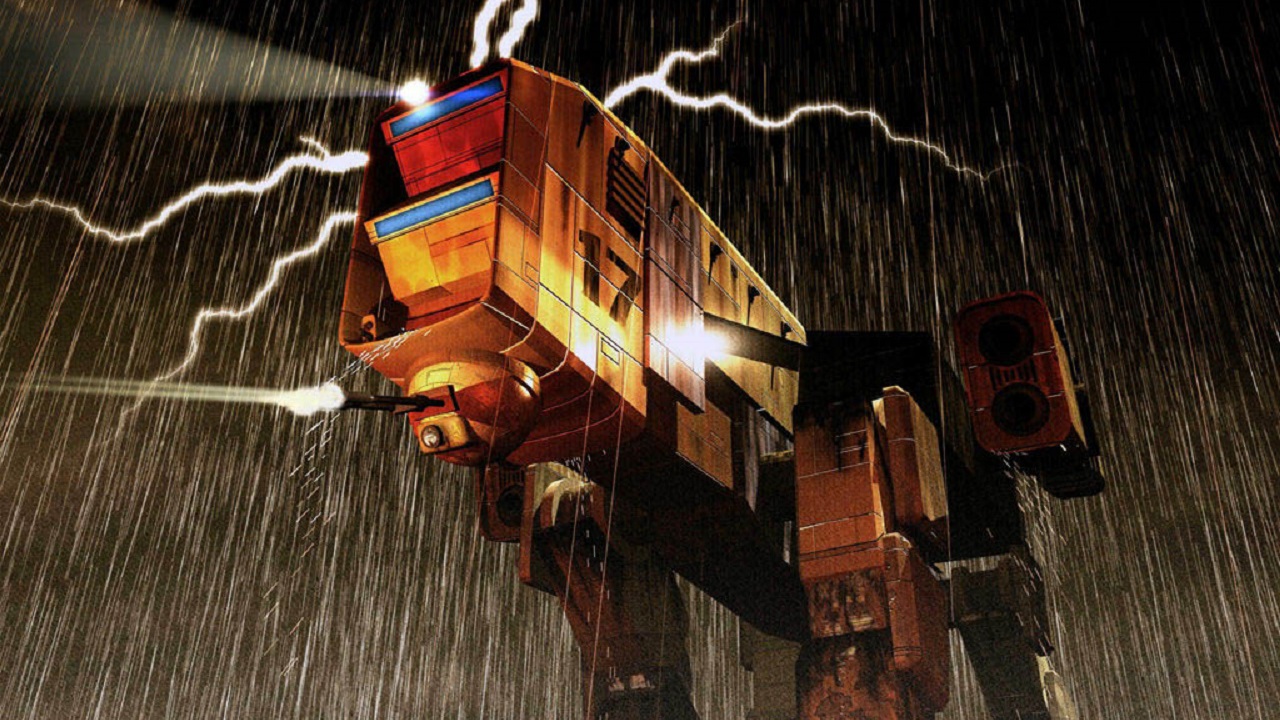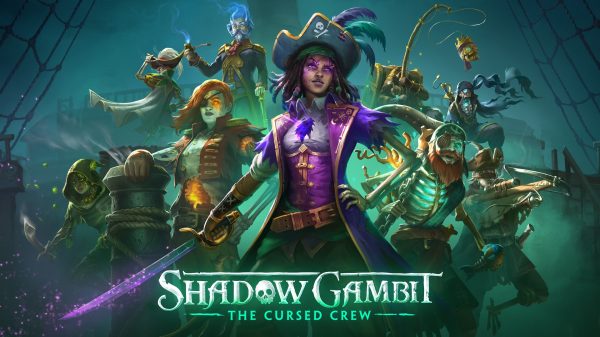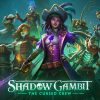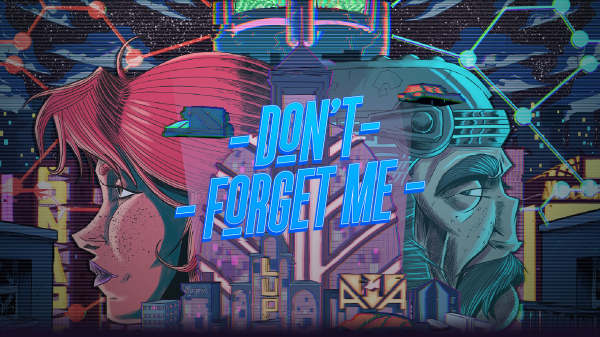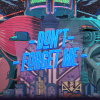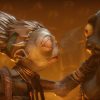The late 90s were a turbulent time for Westwood Studios. 1997’s Command & Conquer: Sole Survivor and 1998’s Dune 2000 were both shrugged off by critics. Its more successful titles like 1997’s (excellent) Blade Runner failed to turn a significant profit. Electronic Arts’ purchase of Westwood in 1998 – a bonus for its annexing of Virgin Interactive’s US branch – cast the studio’s independence into doubt, as its new masters put it to co-development duties and seemingly dragged down its other iconic franchise.
But EA had purchased Westwood in the midst of a creative firestorm. They were hard at work on Command and Conquer: Tiberian Sun, a game that wouldn’t see the light of day until just over a year later. In fact, Tiberian Sun had already been delayed by the time of the acquisition – and would be a second time. Reasons for this are complex, but they can be simplified to a single word: Ambition. It’s also ambition that makes Tiberian Sun stand out from the rest of the Command & Conquer family.
You see, there was a time when Westwood ruled the RTS world. They had invented the genre with 1992’s Dune II: The Building of a Dynasty and refined it into its modern form in 1995 with Command & Conquer (known as Tiberian Dawn amongst fans and Westwood themselves). With 1996’s Command & Conquer: Red Alert came the peak of the ‘old-school’ RTS. You build, you train, you attack before your enemy does; simple, but effective enough to make Red Alert one of the most iconic games of the dial-up age.
But the RTS was not living in a vacuum. Blizzard Entertainment, after riding Westwood’s coattails with its Dune II clone Warcraft, revolutionised the genre with 1995’s Warcraft 2 and unleashed a juggernaut in 1998. StarCraft’s monumental legacy needs no introduction or explanation. Other games like 1997’s Dark Reign: The Future of War, Age of Empires and Total Annihilation were shaking up the RTS in new ways. God, was that year great for games.
But there were still many cheap imitators, and Command & Conquer was still a franchise whose forthcoming entry was highly anticipated. It was anticipation that the team felt very heavily on their shoulders. Producer Rade Stojsavljevic recalled the atmosphere in 2000:
‘‘The degree of hype and expectations that Tiberian Sun had to fulfil was staggering. We had a team of experienced developers who wanted to beat their own expectations while simultaneously building a game that would be everything the fans of the series expected and more. This was not a realistic goal since it’s just not possible to make something that will meet everyone’s expectations.’
But Westwood had always been ambitious. Co-founder Louis Castle explained in February that all of the studio’s games were born out of a set of ‘high ideals’. For Tiberian Sun, explained Castle, it was destructible terrain. It was dynamic, real-time lighting. It was ‘fantastic futuristic units’. The stakes were high, and Westwood were going big or going home. After all, this was a test of their abilities. Could they deliver a brand-new RTS experience, or would they be forever doomed to wallow in the house that Red Alert built?

If a musical RTS doesn’t exist, it really should
Lay off the land
In Tiberian Sun, the terrain became more interactive than ever before. Explosive firefights leave craters in the ground, bridges can be demolished to deny easy access, and rivers freeze over on the chilling Arctic maps. ‘Land itself will inherently become a vital resource’, correctly proclaimed PC Gamer magazine’s James Flynn in April of 1998. ‘The player who controls certain areas will have the power to destroy bridges, cut supply lines and dominate the Tiberium Ore fields to a greater extent than ever before.’
Movement being hindered or helped by certain terrains was considered at later stages of development, but the risk of ‘messing up the balance’ stayed the programmers’ hands. ‘Designers didn’t build maps with terrain modifying unit speeds in mind’, recalled lead designer Adam ‘Ishmael’ Isgreen in 2007. Even without that level of depth, Tiberian Sun still carried subtle ways to really screw with your opponents over 36k dial-up. No way you could afford broadband in 1999, you liar.
‘Everyone has done head to head unit combat to death […] so the idea here is to give players other options. If you are at a disadvantage, use the terrain – burn the forest down, shoot down the bridge, and make the environment tougher for your opponent.’
In the finished game, of course, burning forests is not an option. Path-finding problems made that feature unhelpful to development efforts, so it was scrapped. Destructible bridges, however, presented a brand-new element to Command & Conquer that remained in the series. It was a feature that took ‘over ten times as long to program’ than developers had previously anticipated, but the time was well spent. The ability to destroy a bridge – ideally taking your opponent’s units with it – was a way to interact with the environment that carried serious short-term consequences. I say ‘short-term’, because all it takes to repair a bridge is an Engineer unit.

An early screenshot of Tiberian Sun, demonstrating the usefulness of a well-laid trap
But what of Tiberium, that magical crystal that caused so much profit and pain to the world of Command & Conquer? In Tiberian Sun, it received a makeover. No longer did it only manifest in a dull, eerie green; it now had a blue variety. ‘Blue Tiberium’ is worth double the cash but is risky to harvest. Attacking a field of the stuff with explosive weaponry can – and will – make it explode. It was also exceptionally deadly to infantry, more so than the standard green variety, and grows much slower. If you’re to harvest it, you gotta be quick about it.
Tiberium ‘weed’ is also out to get your units. While NOD can harvest it for their toxic missiles, it comes from a ‘central sand anus’ that can be attacked to emit highly toxic gas that turns your units – or your enemy’s – into hideous blobs. Indeed, the terrain is all up for tactical grabs in an ambitious fashion that would be downgraded for Command & Conquer’s next iteration. And that’s saying nothing of the inclement weather that helps or hinders your forces – and is really cool.
Unit lost (and found)
Perhaps Tiberian Sun’s most dynamic and bold legacy lies in its unit design. Command & Conquer was known for its out-there units; Red Alert’s obsession with Tesla Coils found a portable home in infantry and armoured varieties. Tiberian Sun, though, had some really weird units. Shared units between GDI and Nod are basically non-existent, with each side carrying a radically different arsenal.
The basic difference from Tiberian Dawn remains; GDI are the hard hitters, but Nod are sneaky and fast. But Tiberian Dawn’s new sci-fi focus allows it to play with a more diverse set of abilities. The Nod Cyborg will continue to fight even after its legs have been blown off. GDI’s Wolverine and Titan units are mech suits with wild discrepancies in usefulness, which is a polite was of saying ‘Titans rule, and Wolverines drool’.
This variety allows Tiberian Sun to offer what its predecessors could not: Strategy. At high levels of play, every other Westwood RTS eventually devolved into the dreaded ‘tank rush’. Red Alert in particular really screwed the pooch with its Mammoth Tank. Sporting effective solutions against all three kinds of attacks – infantry, armor and air – churning out Mammoth Tank after Mammoth Tank became one of RTS gaming’s earliest meme strategies.
Tiberian Sun offers no such easy ways out. While there are still some drastically overpowered units on display, the cavalcade of niche roles that each unit fills makes the tank rush essentially obsolete. Some units even need to be deployed into a stationary mode to be at their most effective! Movement speed is slowed down as units grow more powerful as well, lending some credence to maintaining a lighter-armoured army well into the late game. These make Tiberian Sun easily the slowest RTS in the Westwood catalogue except for Dune II, due to the latter’s archaic interface.

Luckily, Tiberian Sun’s interface is clean and crisp. Now with production queuing!
But there’s a noticeable absence in Tiberian Sun’s units. Even if you scroll to the bottom of the unit roster, you’ll find nothing that inhabits the water. Seafaring units were a controversial removal from the series, but not without reason. ‘In Red Alert,’ explained Yeo in April of 1998, ‘we felt ships tended to be used in isolation and divided up the maps in a bad way, especially in multi-player games.’ Focusing on the land and air allowed Westwood to focus its attention on those options, dramatically lowering the amount of work required in an already-sluggish development environment.
On the other hand, Yeo’s statement is a baffling one. Red Alert’s sea units were never game changers, sure, but that’s because Westwood made them that way. Even after Red Alert’s expansions, neither unit nor map design would encourage experimentation with the game’s scarce boat count. Thankfully, sea units would return in Red Alert 2 two years later with the series’ best naval combat.
Also returning in Red Alert 2 was a unit’s ability to ‘level up’. If it scored enough kills, it would upgrade its attack power and become tougher. Motivations to preserve a unit in previous titles were non-existent; why bother building a repair pad when you could simply replace the unit? Players almost never had spare time for such tomfoolery either, due to Command & Conquer’s fast pace. Another subtle layer of strategy was added through this simple trick but was by no means going to turn a game around. Still, it was a sign of a studio’s willingness to experiment…just not in substantial ways.
With all that said, Tiberian Sun’s units were not always completely innovative. As GameSpot’s Greg Kasavin argued in his 1999 review, Dark Reign’s APC that burrows into the ground is awfully similar to NOD’s APC that burrows into the ground, and the Siege Tank from StarCraft was another potential inspiration. Hardly plagiarism, but a strong case for Westwood being more ‘in touch’ with their rivals than people let on.
Even if the units were copied, though, their visual design is nothing short of noice. ‘Gritty realism’ was the order of the day, as artist Gary Freeman described. ‘We made all that futuristic technology look not only functional, but used and abused.’ The rest of the Tiberium line of games would carry this aesthetic through to the end. It’s a shame, though, that their units never got quite as fun.
Sights and sounds
Tiberian Dawn was originally created as a fantasy game. The contemporary war setting in the finished product was added for ‘accessibility’. Its aesthetic, therefore, required gung-ho modern-sounding music. Enter Frank Klepacki, one of the most iconic video game composers that ever lived. Not only was Tiberian Dawn’s music just as beloved as it was awesome, so too was Red Alert’s more atmospheric vibe.
So when the time came for Tiberian Sun’s soundtrack to be scored, Klepacki was quick to start work. The first track he composed, ‘Stomp’, was used in early promotional material for Tiberian Sun – including a trailer included in Dune 2000 that I watched a lot as a kid. The track was inspired by the game’s new mech units; ‘Whereas Hell March had the sounds of marching soldiers’, recalled Klepacki in 2009. ‘I thought the walking sounds of these GDI units would be sweet to incorporate into a main theme.’
Others at Westwood apparently disagreed, much to Klepacki’s surprise:
‘I was told that the essence of this game’s mood is post-apocalyptic, and the world is headed for tiberian mutation, and that the soundtrack should reflect that, and be very dark, moody, and not upbeat at all. AT ALL?’
After composing just two tracks in this new style – ‘Dusk Hour’ and ‘Flurry’ – Klepacki ran out of creative juice. He’d had his mind set on making Tiberian Dawn’s guitar-heavy soundtrack, but bigger and badder. Tiberian Sun’s direction was alien to him, so he called for backup. Jarrid Mendelseon, one of Klepacki’s friends, was bought in to assist in this new, darker endeavour. With a partnership now firmly set, the two composed the most atmospheric soundtrack that Westwood studios ever released.
Mendelson’s ‘fresh set of ears’ are immediately apparent in just how stark the transformation between even Red Alert’s atmospheric lean and the sci-fi creep of Tiberian Sun’s soundtrack. ‘Pharotek’, ‘Heroism’, ‘Lone Trooper’, ‘The Defense’, ‘Gloom’, and ‘Scouting’, all composed by Mendelson, feature a wide variety of instruments and styles. The classic mantra of ‘make songs you’d want to listen to outside the game’ is out in full force, and yet each song fits Tiberian Sun’s gloomy sci-fi atmosphere perfectly.
Klepacki wrote ‘Timebomb’, ‘Infrared’, ‘Valves’, ‘Approach’, ‘What Lurks’, and ‘Mad Rap’, and I still can’t get over just how good Valves is. Even with such a diverse soundtrack, it drips with the atmosphere of a world going mad because of that unstoppable crystallised cancer – Tiberium. It’s a surprise, then, to hear that Klepacki himself isn’t its biggest fan. He says that there were many ideas in the soundtrack that were ‘a little bit forced’, and that the direct collaborations between Klepacki and Mendelson were apparently the most fruitful:
‘…if I could do it all over again, I’d rather we both wrote the entire soundtrack in the same room. Not to take anything away from our individual work, but I just really enjoyed the creative exchange and the results from it.’
Knowing that, it’s a relief to know that Klepacki and Meldenson would collaborate again for 2001’s Emperor: Battle for Dune – Westwood’s last RTS.
But Tiberian Sun wasn’t Westwood’s last, and the studio had growing pains in more ways than just the digital side of development. The physical side presented its own problems; Tiberian Sun’s cutscenes were ‘the most complex and highest-quality cinematic sequences Westwood has ever done’, reminisced Stojsavljevic. ‘However, these movies came at a very high price.’ Ambition, again, showed its ugly side.
Post-production for the cutscenes was apparently an absolute nightmare. ‘The problem was we didn’t have enough time’, recalls Stojsavljevic. The 40-strong cutscene team had underestimated their capability for ‘complex shots’, and just how much processing power and storage would be required for Tiberian Sun’s high-quality cutscenes:
‘…the team struggled to get video from digital beta to the SGI- and PC-based compositing systems. Footage was digitized on an Avid system and copied to file servers for distribution to the PCs. The SGIs grabbed the footage directly from tape using built-in digitizing hardware. From the compositing stations, various shots were completed and transferred back to a file server to be compressed and put in the game. This, along with the fact that many individual scenes were worked on by several artists, multiplied the storage requirements several times over.’
Tiberian Sun’s full-motion video cutscenes are easily the most straight-faced in the entire series. James Earl Jones and Michael Biehn, two of the most well-known actors in sci-fi, made their video game debuts in the present-apocalypse of the Second Tiberium War. The story being told was of a wider scale, and with more at stake, than Tiberian Dawn’s Clinton-esque fetish for foreign policy or Red Alert’s B-movie charm. It was also incredibly dark. No other Command & Conquer game in the Westwood library would be this dreary, this run down, this hopeless.
But it’s still a Westwood game, and the dark nature of Tiberian Sun’s story is almost undone by just how cheesy the actual cutscenes are. It’s an unfortunate side-effect of a video game developer in the 1990s wanting Hollywood quality with home movie money, and one that seemed to only apply to FMV. There’s a reason it went out of style; too difficult to make, with limited technology and a requirement for writing prowess.
There’s no arguing, however, that it isn’t absolutely fun to watch. Having Kyle Reese say, ‘We lose…’, then replying to himself only after walking over to, and sitting in, his chair with ‘…and I hate to lose’ in a hastily-edited sequence turns a machismo one-liner into art.
Still, senior producer Donny Miele spoke for the entire studio when he says that he was starstruck by the cutscenes’ star power:
‘‘When it came time to hire actors, we were aggressive and went after our dream cast. We got it. [Michael] Biehn brings to Tiberian Sun the same gritty intensity he brought to The Terminator and Aliens. He’s the perfect hero. [James Earl] Jones radiates authority with every line, the perfect general, full of wisdom and power. Working with talent of their caliber has been a thrill for all of us.’
Nowadays, it’s easy to dismiss FMV as a failed experiment. But back then, seeing Darth Vader in your video game was the absolute shit. Even after Westwood ceased to be, Command & Conquer kept the live-action flag flying.
Flying too close to the Tiberian Sun?
20 years after its original launch, what can we make of Command & Conquer 2?
Its chronological position in the series does it no favours. Being sandwiched between the two best games in the series – Red Alert and its sequel – makes it easy to unfavourably compare to those two juggernauts. Tiberian Sun’s overly ambitious nature, too, was an ironic leash. Westwood employees like Stojsavljevic lamented this lack of discipline, but still managed to bring a damn fine game out of it.
Only Westwood could pull off a clutch save like that; a team that Stojsavljevic called ‘one of the most experienced and professional teams I’ve ever had the privilege of working with.’ A team that would learn from its mistakes this time and use those lessons to make Red Alert 2 – the peak of the series and one of the best RTS games ever made. Without Tiberian Sun’s bold unit variety, innovative map design, and dedication to atmosphere, Command & Conquer would have died in 1999. Sure, there were many other sci-fi RTS games out there before Tiberian Sun. But as a great man once said, ‘You can’t kill the messiah.’
EA made Tiberian Sun freeware in 2015, so it’s easy to obtain today. The CnCnet version, though, is the best.
Sources / further reading
Adam ‘Ishmael’ Isgreen, Petroglyph Forums, Ask Petroglyph, March 2007: https://web.archive.org/web/20080215040938/http://www.petroglyphgames.com/forums/index.php?showtopic=2554
Ben Mansill, Command & Conquer: Tiberian Sun, PC Powerplay no. 41, October 1999
Electronic Arts, Renowned Actors James Earl Jones and Michael Biehn to Star in Westwood Studios’ Command & Conquer Tiberian Sun CD-ROM, July 31st 1998: https://web.archive.org/web/20020206025239/http://westwood.ea.com/html/backstage/press/1998/pr_073198.html
Frank Klepacki, BEHIND MAKING THE C&C TIBERIAN SUN SOUNDTRACK, August 5th 2009: https://www.facebook.com/notes/frank-klepacki/behind-making-the-cc-tiberian-sun-soundtrack/124043224602/
Geoff Keighley, GameSlice, Behind the scenes of the game industry, on or before 6th December 1998: https://web.archive.org/web/19990221051136/http://www.gameslice.com/original/ts/
Greg Kasavin, Gamespot, Command & Conquer: Tiberian Sun Review, September 1st 1999: https://www.gamespot.com/reviews/command-and-conquer-tiberian-sun-review/1900-2538386/
John Strike, Command and Conquer: Tiberian Sun was a pivotal moment for Westwood’s RTS series, PC Gamer, January 8th 2018: https://www.pcgamer.com/au/command-conquer-tiberian-sun/
Louis Castle, Ars Technica, How Command & Conquer: Tiberian Sun Solved Pathfinding, February 26th 2019: https://www.youtube.com/watch?v=S-VAL7Epn3o
PC Gamer UK no. 55, April 1998
PC Powerplay no. 47, April 2000
Rade Stojsavljevic, Gamasutra, Postmortem: Westwood Studios’ Command and Conquer: Tiberian Sun, April 4th 2000: https://www.gamasutra.com/view/feature/131595/postmortem_westwood_studios_.php
Stephen Butts, IGN, Command & Conquer: Tiberian Sun, September 4th 1999: https://au.ign.com/articles/1999/09/04/command-conquer-tiberian-sun
Westwood Studios,The Making of Command & Conquer: Tiberian Sun, August 1999: https://cnc-comm.com/tiberian-sun/gallery?category=Behind%20The%20Scenes&page=2
Arana blames her stunted social skills and her general uselessness on a lifetime of video games. Between her ears is a comprehensive Team Fortress 2 encyclopedia. Her brain remains at large.




